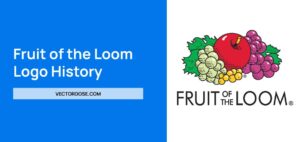The Sprite logo design is both iconic and refreshing, creating a unique and inspiring look. Over time, the Sprite logo has changed to keep up with the latest trends in graphic design. Whether you’re an experienced designer or just starting, the history and evolution of the Sprite logo design can offer valuable lessons. From bold typography to clear images, it captures the innovative spirit that every graphic designer aims for. This article looks at the history and changes of the Sprite logo, offering tips for designers and businesses on creativity and branding.
Brand Overview
Owner: Berkshire Hathaway
Founder: Asa Griggs Candler
headquarters: Atlanta, Georgia, United States
Founded: 1892, Atlanta, Georgia, United States
CEO: James Quincey (May 1, 2017–)
CFO: John Murphy
website cocacola.com
download the free logo PNG & SVG
History of Sprite
Sprite is a popular soft drink available in a range of flavors. The original flavor is lemonade, but there are also versions with vanilla, orange, grape, cherry, cranberry, and more. The drink is colorless and is sold in green bottles with distinctive round depressions that look like bubbles rising from the bottom. The unique green color of the bottle helps Sprite stand out from other sodas. The Coca-Cola Company introduced Sprite in 1961 to compete with 7 Up. Interestingly, the name “Sprite” was trademarked by Coca-Cola in the 1940s. The drink used to be advertised with a character named Sprite Boy, but that changed when the drink was rebranded. The logo has been updated over the years, but the brand name has always remained inside the distinctive “star.” The unique design and refreshing taste of Sprite have made it popular not only in the United States but also in many other countries around the world.
Evolution of Sprite Logo
The evolution of the Sprite logo design is really interesting. The logo has changed a lot over the years, with different colors and simpler designs, reflecting what the brand stands for and what people like. In this review, we’ll look at five important things that have shaped the path of the Sprite logo design. It’ll give graphic designers some good ideas about how a brand can change and grow while still staying true to itself.
1961
![]()
When Coca-Cola created a new brand, they made sure it was unique. The labels were designed to promote sustainability and featured the blue-green “Sprite” logo in a bold font with thin, long serifs. Instead of a dot above the letter “i,” there was a greenish-yellow star with eight asymmetrical rays. Underneath the drink’s name, you could barely see the word “TRADEMARK.”
1964
![]()
In 1964, the emblem’s colors were updated to red and grass-green. Half of the letters were in one color, while the other half were in the second color. The star was made larger and bolder, and it was colored red, along with the vertical bar of the “I”.’
1972
![]()
The Sprite logo was changed to a green color and tilted to the side. The designers thought this design emphasized the drink’s explosive “character” when opened. The diagonal inscription also worked well with the element that replaced the dot above the “I,” resembling an explosion to represent the burst of flavor.
1980
![]()
The Sprite logo got a makeover in 1974. They changed the writing to a smoother style without those pointy bits, with no fancy lines. and the main text was green again. They also made the dot in the logo red.
1984
![]()
In 1984, Sprite’s logo got a makeover. They changed the “Sprite” lettering to white and made it less round. They replaced the orange circle above the “i” with a big yellow-green lemon. On the left side of the lemon, they added the word “Enjoy,” and at the bottom, they replaced “TRADEMARK” with the handwritten slogan “Great Lymon Taste.”
1989
![]()
The well-known Sprite emblem, which incorporated a lemon in place of a dot, made its debut in 1989. The light green wordmark, presented in a bold and stylish font, was slightly slanted and featured a two-layered image of a lime and lemon placed horizontally above the “I”. This rendition of the Sprite logo is widely regarded as one of the most recognizable designs ever produced.
1994
![]()
The designers lifted the right side of the word to give it a more dynamic look. They also added uneven gray shadows behind each letter to enhance the effect.
2006
![]()
In 2006, Sprite’s logo got a complete makeover. The white “Sprite” lettering now had a double-blue outline with no spacing between the letters. It was placed horizontally on top of a large green-and-yellow symbol made up of two “petals” in a silver frame, taking up more than half of the space. This symbol replaced the previous lemon and lime that used to dot the “i.”
2008
![]()
The “Sprite” word was tilted inside a silver frame with six corners. The shape looked like the star from the drink’s original logo. But in this case, it portrayed liquid about to spurt from a fallen lemon. The lemon had two colors: yellow on top and green on the bottom. Additionally, the base of the logo was square and had a blue-green gradient.
2014
![]()
The logo was updated in 2014, making it simpler by getting rid of the gradient colors and shiny look. It was changed to a flat green-and-white image, but they kept the large lemon on top.
2015
![]()
The lemon is no longer in the picture frame after a long time. The lettering in the frame has stayed the same.
2019
![]()
In 2019, the logo got a makeover. The designers tweaked the angle, switched to a bold sans serif font, added a dot above the “i,” and adjusted the line thickness in the frame.
2022-today
![]()
The current logo is simple and minimal. It’s a horizontal, pastel-green design with a large dot above the letter “i.” To make it blend well with lowercase letters, the designers created deep cutouts at the “i” and neighboring “t,” and shortened the cap of the letter “r.”
color codes of sprite logo
![]()
Conclusion
The journey of the Sprite logo design is a fascinating tale of creativity, innovation, and smart branding. It shows how a logo can change with the times while keeping its core identity. For graphic designers, the Sprite logo is an inspiring example of how careful design can leave a strong impression and become a globally recognized symbol. Regardless of your level of experience, Sprite’s logo design offers valuable lessons on how to influence a brand. Let’s keep these insights in mind as we develop visuals that engage, captivate, and endure.


